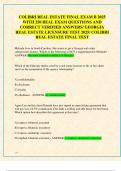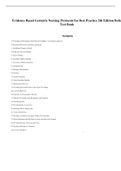Exam (elaborations)
Accounting Principles, Volume 1, 9th Canadian Edition by Weygandt, Donald Kieso and Paul Kimmel | All Chapter 1-10 | TEST BANK
- Course
- Institution
- Book
TEST BANK for Accounting Principles, Volume 1, 9th Canadian Edition by Jerry J. Weygandt, Donald E. Kieso and Paul D. Kimmel ISBN-13 978-1. All Chapter 1-10 Solutions. 1269 Pages. Tabl e of contents Volume 1 1 Accounting in Action 2 The Recording Process 3 Adjusting the Accounts 4 Completion ...
[Show more]












